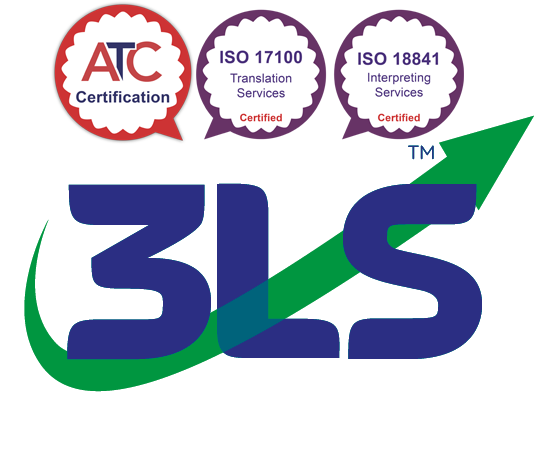Chinese translation services – Simplified & Traditional – can connect you with over 1.3 BILLION people worldwide.
Cantonese & Mandarin interpreting services
Simplified (Mandarin) Chinese for PRC & Singapore
Traditional (Cantonese) Chinese for elsewhere
Professional mother-tongue quality-assured Chinese to English and English-Chinese translation and interpreting for UK business and public sector since 1990.
Our Simplified Chinese and Traditional Chinese translation services, with our expert Chinese typesetting, help UK exporters across many sectors including technical/engineering, logistics, insurance, legal, food & beverage, and financial.
We also provide professional mother-tongue Chinese interpreting services in Cantonese and Mandarin, as well as a full range of multimedia services including Cantonese and Mandarin Chinese voiceover or subtitling, and Mandarin or Cantonese transcription.
All are underpinned by ISO 18841 and ISO 17100 accreditation.
There’s a lot of information on the web about the Chinese languages, but if – like us – you’re really into language, not just eager to sell Chinese translation services, then this page provides a great overview. Enjoy!
Free consultation Get a Free Quote
Cantonese and Mandarin interpreting
Cantonese and Mandarin interpreting services for liaison, conference, court and medical interpreting UK-wide and beyond. However, Cantonese and Mandarin are not the only languages in Chinese interpreting.
Others include Wu, Min, Yue and several more, including the “official” PRC spoken form of Mandarin called Putonghua. We offer several of these main languages.

Our biggest interpreting gig to date was actually for Mandarin interpreting, where we arranged no less than 79 well-qualified, professional Mandarin interpreters for a DIT/Bank of China business matchmaking event in Manchester – pictured above.
Chinese transcription services
Popular for research and conferences, Chinese transcription can be mono- or bilingual (with a Chinese to English translation).
Spoken Chinese is mainly Mandarin or Cantonese, although a number of other dialects exist which can considerably complicate Chinese transcription!
For legal use we also offer certified Chinese transcription – there’s more on our Transcription page.
Simplified Chinese translation
It’s complicated… but written Chinese translation has two main forms; which you need depends on where it’s for. Traditional Chinese surprisingly isn’t (officially) used in China! The written form used in the People’s Republic of China (“PRC”) as well as in Singapore and much of Malaysia has since the 1950s’ Cultural Revolution been Simplified Chinese, the spoken form there being Mandarin (called “Putonghua” in the PRC itself). If you’re exporting to PRC or Singapore you need Mandarin, written in Simplified Chinese.
Traditional Chinese translation
Chinese communities unimpacted by the Revolution – including Taiwan, Hong Kong and Macau and other diaspora – still use Traditional Chinese, the spoken form generally being Cantonese. We handle extensive Traditional Chinese translation (and Cantonese interpreting) for the public sector to support these communities in the UK.
What’s the actual difference then?
The main difference between Simplified and Traditional Chinese is the character set; as the name suggests, Simplified uses simpler (and fewer) characters than does Traditional Chinese. Getting the right one is critical – so if you’re not sure which you need, we’re happy to help.
Did you know…?
To complicate things even further, Taiwan speaks Mandarin
– but writes in Traditional Chinese!
If you want to export to the Far East,
it’s REALLY important to know the market location you want to sell into!
Chinese typesetting services
Our expert Chinese typesetting services are available in Quark, InDesign, Illustrator and more and of course include full proofreading by our mother-tongue linguists. In addition to the (critical!) correct choice of font (Simplified Chinese and Traditional Chinese use different and incompatible font sets, Chinese typesetting has several wrinkles which really do affect credibility of the product.
As well as strict presentation rules, other factors include the handling of Western text in Chinese translation, such as tradenames. In most Chinese typesetting fonts, Western characters are “spindly” and unattractive, so professional Chinese typesetting like ours tends to use compound fonts which combine the Chinese typeface’s styling with a true Western font such as Helvetica. However, handling compound fonts takes real expertise, and it’s important to note that opening and re-saving Chinese typesetting that uses compound fonts on improperly-configured systems will trash the document. We will always finalise Chinese typesetting for you as press-ready PDF made to your specifications.
Handwritten Chinese translation
Unusually among providers, we also work with handwritten texts – both vertical column and line formatted, in both Simplified and Traditional Chinese (Mandarin and Cantonese). More information is here.
Chinese voiceover & Chinese subtitling
There’s more info – including a downloadable guide on getting the best Chinese voiceover – on our voiceovers page.
Unusually among language voiceover providers we’re a translation company. That means unlike many commercial voiceover studios, our Chinese voiceover scripts are mother-tongue professionally translated and 100% reviewed to ensure your message is accurate and slick.
We also offer Chinese subtitling, a popular alternative to voiceover.
TIP: Beware Chinese translation length
Checking translated voiceover script length for “fit” to the English original is generally by wordcount. However, the glyph “alphabet” means Chinese doesn’t work like that – so while the translation may look far shorter than the English source, it can take far longer to read!
Experienced Chinese voiceover translation, able to work around the text to keep lengths usable, is key if your video isn’t to sound like Minnie Mouse. That said, the differences in length can be so great that it simply isn’t possible to match lengths – so if you’re planning to Chinese voiceover for example a product video, consider that in the script and the original recording.
Full Corporate Member of the Institute of Translation and Interpreting, we’re also an accredited Member of the Association of Translation Companies, and are ISO 17100 and ISO 18841 accredited. You’re in safe hands.
So for a better language solution for your needs, drop us a few details (in total confidence of course) and we’ll get straight back to you.
Or, just give our helpful team a call on UK Freefone 0800 783 4678 (Intnl 0044 1772 558858)
